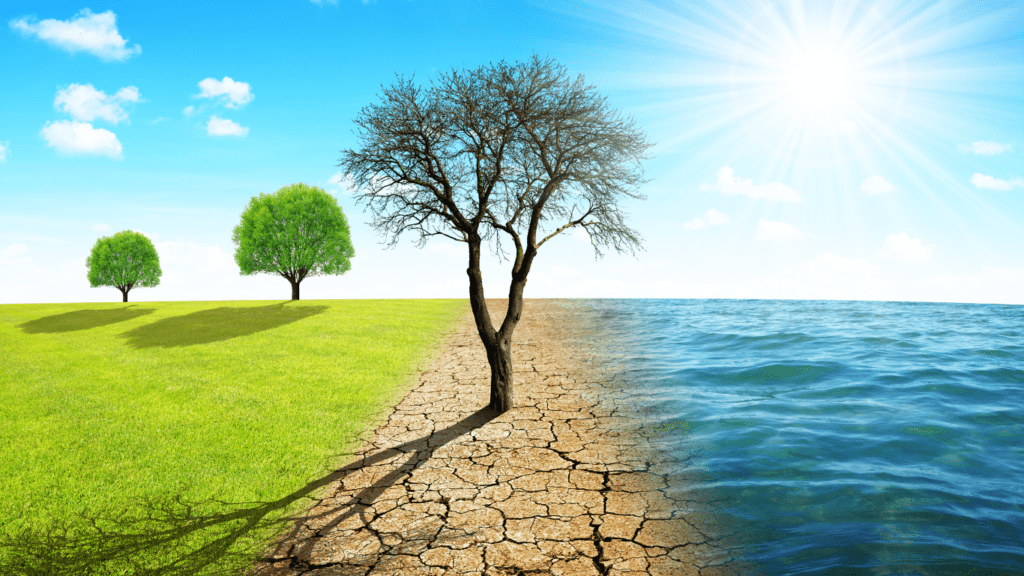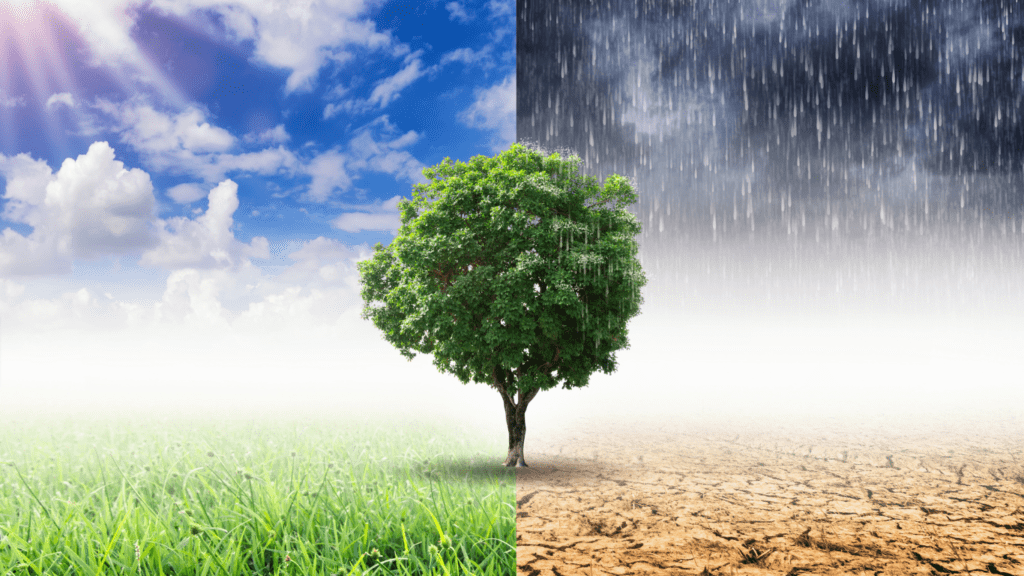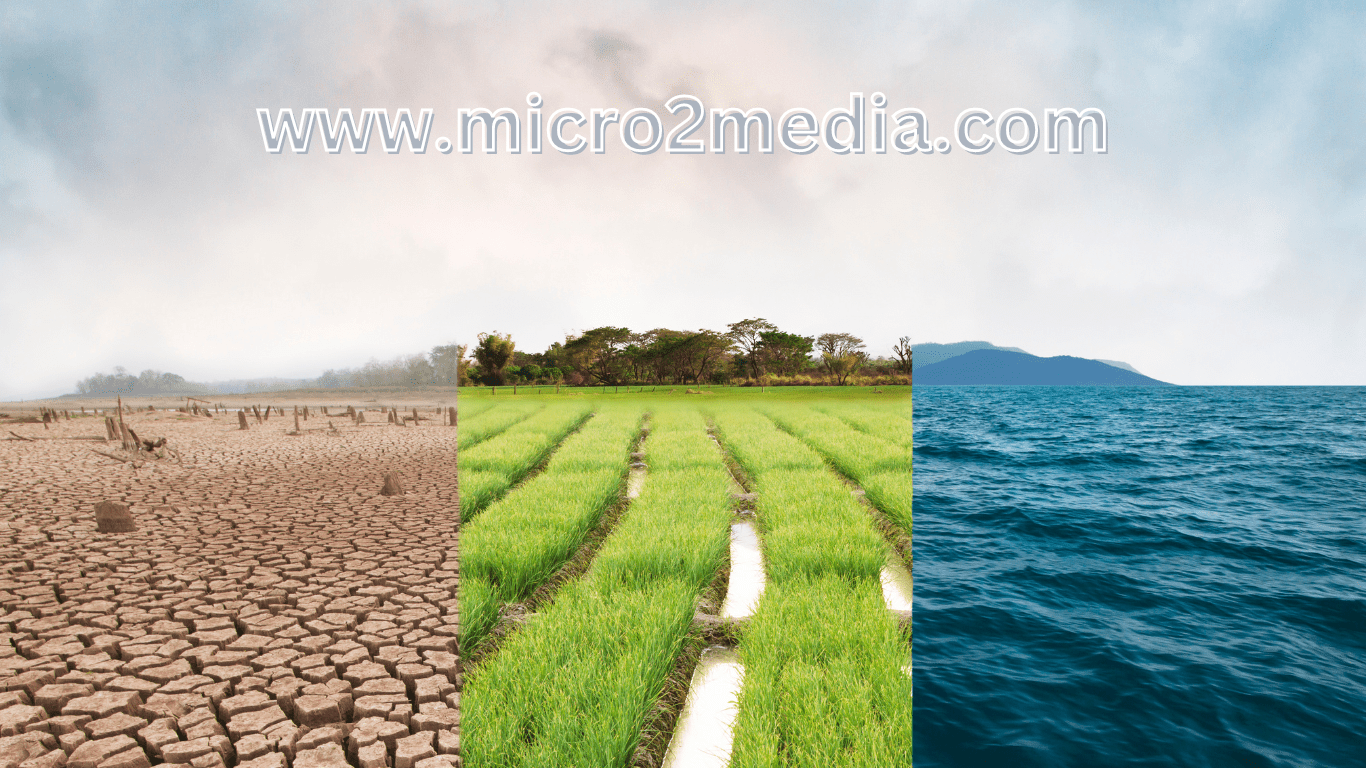The State of the Climate: A Planet in Peril
As we stand at the threshold of a new era, the Earth’s climate is undergoing a transformation of unprecedented proportions. The very fabric of our planet’s ecological balance is being stretched to the breaking point, with far-reaching consequences for human societies and the natural world. The science is clear: human activities, particularly the emission of greenhouse gases, are driving climate change at an alarming rate. The consequences are stark: melting glaciers, rising sea levels, and extreme weather events are becoming the new norm.
This chapter provides a comprehensive overview of the state of the climate, delving into the science behind this global phenomenon, its devastating impacts, and the dire consequences of inaction. We will explore the current trends and future projections, highlighting the critical threshold we are fast approaching. The IPCC warns us that we have only a decade to take drastic action to limit global warming to 1.5°C above pre-industrial levels, beyond which the consequences will be catastrophic.
As we navigate this critical moment in human history, it is essential to understand the climate crisis in all its complexity. This knowledge will empower us to take collective action, harnessing our collective ingenuity and creativity to mitigate the effects of climate change and create a sustainable future for all. The fate of our planet hangs in the balance; let us embark on this journey of discovery and transformation together.
II. The Science of Climate Change
Climate change is a complex and multifaceted phenomenon, driven by a intricate array of factors. At its core, however, lies a simple scientific principle: the greenhouse effect.
A. The Greenhouse Effect
The greenhouse effect is a natural process that has been essential for life on Earth. It occurs when certain gases in the atmosphere, such as carbon dioxide (CO2), methane (CH4), and water vapor (H2O), trap heat from the sun, warming the planet. This process is crucial for maintaining a habitable climate, as it allows the Earth’s surface to retain heat that would otherwise be lost to space.
B. The Enhanced Greenhouse Effect
Human activities, particularly since the Industrial Revolution, have significantly intensified the natural greenhouse effect. The massive release of CO2 and other greenhouse gases through fossil fuel combustion, deforestation, and land-use changes has led to a substantial increase in their atmospheric concentrations. This, in turn, has amplified the natural greenhouse effect, leading to an enhancement of the warming process.
C. The Role of Carbon Dioxide (CO2)
CO2 is the most significant long-lived greenhouse gas, responsible for approximately 65% of the warming attributable to all greenhouse gases. Its concentration has increased by about 40% since the Industrial Revolution, primarily due to fossil fuel burning and land-use changes. The current CO2 concentration of over 415 parts per million (ppm) exceeds the preindustrial level of around 280 ppm, and is projected to continue rising unless drastic reductions are made.
D. Other Greenhouse Gases
While CO2 is the most prominent greenhouse gas, other gases, such as methane (CH4), nitrous oxide (N2O), and fluorinated gases (F-gases), also play a significant role in the enhanced greenhouse effect. These gases have varying lifetimes and global warming potentials, but collectively contribute to the overall warming effect.
E. Climate Feedback Loops
The Earth’s climate system is characterized by complex feedback loops, which either amplify or dampen the warming process. Examples of feedback loops include:
- Melting Arctic ice, which reduces the Earth’s albedo (reflectivity), allowing more solar radiation to be absorbed, and accelerating warming.
- Thawing permafrost, which releases methane, a potent greenhouse gas, accelerating warming.
Understanding these scientific principles is crucial for grasping the complexities of climate change and developing effective strategies for mitigation and adaptation. In the next section, we will explore the impacts of climate change on the planet and human societies.
III. Impacts of Climate Change
Climate change is having far-reaching impacts on the environment, human health, and the economy. The consequences of rising temperatures, changing precipitation patterns, and increased extreme weather events are being felt across the globe.

A. Environmental Impacts
- Rising Sea Levels: Melting glaciers and ice sheets are causing sea levels to rise, leading to coastal erosion, flooding, and saltwater intrusion into freshwater sources.
- Changes in Precipitation Patterns: Shifts in rainfall and snowfall patterns are resulting in droughts, floods, and heatwaves, affecting ecosystems and human settlements.
- Loss of Biodiversity: Climate change is altering habitats, disrupting species distribution, and accelerating extinctions, compromising the health of ecosystems and the services they provide.
B. Human Health Impacts
- Heat-Related Illnesses: Increased frequency and severity of heatwaves are causing heat exhaustion, heatstroke, and cardiovascular disease.
- Vector-Borne Diseases: Changes in temperature and precipitation patterns are altering the distribution and prevalence of disease-carrying insects like mosquitoes and ticks.
- Mental Health: Climate change is causing stress, anxiety, and trauma, particularly in communities displaced or affected by extreme weather events.
C. Economic Impacts
- Damage to Infrastructure: Rising sea levels, flooding, and extreme weather events are damaging buildings, roads, and bridges, incurring significant economic costs.
- Impacts on Agriculture: Changes in temperature and precipitation patterns are affecting crop yields, food security, and the livelihoods of farmers and communities dependent on agriculture.
- Tourism and Recreation: Climate change is altering the distribution and abundance of natural attractions, affecting the tourism and recreation industries.
D. Social and Cultural Impacts
- Displacement and Migration: Climate change is displacing communities, particularly in low-lying coastal areas and small island nations, leading to social, cultural, and economic disruption.
- Cultural Heritage: Rising temperatures and extreme weather events are damaging cultural heritage sites, threatening the loss of historical and cultural artifacts.
- Indigenous Communities: Climate change is affecting the livelihoods, traditional practices, and cultural identities of indigenous communities, who are often the most vulnerable to its impacts.
The severity and extent of these impacts will only continue to grow unless decisive action is taken to reduce greenhouse gas emissions and transition to a low-carbon economy. In the next section, we will explore the consequences of inaction and the benefits of taking collective action to address the climate crisis.
IV. Consequences of Inaction
The consequences of inaction in the face of climate change will be severe and far-reaching. If we fail to reduce greenhouse gas emissions and transition to a low-carbon economy, the impacts of climate change will continue to intensify, leading to:

A. Catastrophic Climate Change
- Tipping Points: Irreversible damage to critical ecosystems, such as the Amazon rainforest and coral reefs, leading to catastrophic consequences for the planet.
- Runaway Climate Change: Unchecked warming, leading to a self-reinforcing cycle of climate change, with devastating consequences for human societies.
B. Humanitarian Crises
- Mass Migration: Climate change will displace millions, leading to social, economic, and political instability.
- Food and Water Scarcity: Changes in precipitation patterns and increased frequency of extreme weather events will lead to food and water shortages, exacerbating social and political tensions.
C. Economic Collapse
- Loss of Productivity: Climate change will reduce economic productivity, leading to widespread job losses and economic instability.
- Damage to Infrastructure: Increased frequency and severity of extreme weather events will damage critical infrastructure, incurring significant economic costs.
D. Social and Cultural Devastation
- Loss of Cultural Heritage: Climate change will damage or destroy cultural heritage sites, threatening the loss of historical and cultural artifacts.
- Social Unrest: Climate change will exacerbate social and political tensions, leading to social unrest and conflict.
The consequences of inaction are dire, but there is still hope for a sustainable future. In the next section, we will explore the benefits of taking collective action to address the climate crisis.
V. The Benefits of Collective Action
Taking collective action to address the climate crisis offers numerous benefits, including:
A. Mitigating Climate Change
- Reducing Greenhouse Gas Emissions: Collective action can lead to significant reductions in greenhouse gas emissions, slowing the rate of global warming.
- Transitioning to a Low-Carbon Economy: A global transition to a low-carbon economy can create new economic opportunities and jobs, while reducing our reliance on fossil fuels.
B. Economic Benefits
- Creating New Industries: The transition to a low-carbon economy can create new industries and job opportunities in fields like renewable energy, sustainable infrastructure, and eco-tourism.
- Reducing Economic Costs: Collective action can reduce the economic costs of climate change, including damage to infrastructure, loss of productivity, and impacts on human health.
C. Social and Cultural Benefits
- Protecting Cultural Heritage: Collective action can help protect cultural heritage sites and historical artifacts from the impacts of climate change.
- Supporting Vulnerable Communities: Collective action can provide critical support to vulnerable communities, including indigenous peoples, who are often the most affected by climate change.
D. International Cooperation and Peace
- Global Solidarity: Collective action on climate change can foster global solidarity and cooperation, promoting peace and stability.
- Sharing Knowledge and Technology: International cooperation can facilitate the sharing of knowledge, technology, and best practices, accelerating the transition to a low-carbon economy.
By working together, we can address the climate crisis and create a more sustainable, equitable, and peaceful world for future generations. In the next section, we will explore the strategies and solutions for achieving this vision.
VI. Strategies and Solutions
To address the climate crisis, we must employ a multifaceted approach that incorporates various strategies and solutions. Here are some key areas to focus on:
A. Transition to Renewable Energy
- Solar and Wind Power: Rapidly increase the adoption of solar and wind power to reduce dependence on fossil fuels.
- Energy Storage: Develop and deploy efficient energy storage solutions to ensure a stable and reliable energy supply.
B. Energy Efficiency and Conservation
- Building Insulation and Retrofits: Improve building insulation and retrofit existing buildings to reduce energy consumption.
- Transportation Electrification: Promote the adoption of electric vehicles and public transportation to reduce emissions.
C. Carbon Capture and Utilization
- Carbon Capture Technology: Develop and deploy carbon capture technology to reduce emissions from industrial sources.
- Carbon Utilization: Encourage the use of captured carbon in products like concrete, plastics, and fuels.
D. Sustainable Land Use and Agriculture
- Reforestation and Afforestation: Plant billions of trees to restore forests and promote carbon sequestration.
- Regenerative Agriculture: Encourage sustainable agricultural practices that enhance soil health, biodiversity, and carbon sequestration.
E. Climate-Resilient Infrastructure
- Sea Walls and Coastal Protection: Build sea walls and implement coastal protection measures to mitigate sea-level rise.
- Flood-Resilient Construction: Develop and implement flood-resilient construction standards for buildings and infrastructure.
F. International Cooperation and Climate Governance
- Global Climate Agreements: Strengthen and implement global climate agreements like the Paris Agreement.
- Climate Education and Awareness: Promote climate education and awareness to inspire individual and collective action.
By implementing these strategies and solutions, we can reduce greenhouse gas emissions, transition to a low-carbon economy, and build a more sustainable and resilient future for all.
VII. Conclusion
The climate crisis is a pressing global issue that requires immediate attention and collective action. The consequences of inaction will be severe and far-reaching, while the benefits of taking action will be numerous and significant.
A. Urgent Call to Action
We must act now to reduce greenhouse gas emissions, transition to a low-carbon economy, and build a more sustainable and resilient future. This requires a global effort, involving governments, businesses, civil society, and individuals.
B. Hope for a Sustainable Future
While the challenges are significant, there is hope for a sustainable future. By working together and employing a multifaceted approach, we can mitigate the effects of climate change and create a better world for future generations.
C. Final Thoughts
The climate crisis is a defining moment in human history. We have the knowledge, technology, and resources to address this challenge. Let us work together to create a sustainable future, where all people can thrive and prosper.
D. Call to Action
We urge governments, businesses, and individuals to take immediate action to address the climate crisis. This includes:
- Reducing greenhouse gas emissions
- Transitioning to a low-carbon economy
- Building climate-resilient infrastructure
- Promoting sustainable land use and agriculture
- Supporting climate change research and development
Further Reading
- Climate change
- Global warming
- Sustainable future
- Low-carbon economy
- Renewable energy
- Energy efficiency
- Carbon capture
- Climate-resilient infrastructure
- Sustainable land use
- Regenerative agriculture
- Climate governance
- International cooperation
- Climate education
- Climate awareness
- Environmental protection
- Greenhouse gas emissions
- Sea-level rise
- Extreme weather events
- Climate migration
- Sustainable development
Explore Micro2media.com
- Our Planet, Our Responsibility: A Comprehensive Guide to Living a Sustainable Lifestyle
- Navigating the Tech Landscape: IT’s Impact on Ozone Gas Pollution
- A Root Revolution: AI Empowers Plants to Fight Climate Change
- Listening to the Land: Invasive Plants Disrupt Ecosystem Soundscapes
- Riding the Waves of Life: Unveiling the Vital Role of the Water Cycle on Our Planet
- Climate Change Threatens Carbon Storage Capacity of Boreal Forests After Wildfires: A Swedish Study
- Spear Squid: A Birth-Dictated Ballet of Brawls and Sperm – A Deep Dive
- Changing the World: The Power of NGOs in Action
- Eco-IT: The Future of Environmental Stewardship
- Climate Modification Unveiled: Balancing the Scales of Earth’s Fate
- Geoengineering Unveiled: Navigating the Pros and Cons of Earth’s Technological Fixes
- Our Disappearing World: Can We Save Enough Wildlife?
- Navigating the Future: Climate Change and the Role of International Accords
- Glaciers: The Melting Gold Mines of Sustainable Development
- Navigating Uncertainty: Revisiting the Role of Probabilities in Climate Adaptation Policy
- Our Rights and Obligations to Future Generations for the Environment
- Nano-Scale Revolution: How Lab-on-a-Chip Technology is Transforming Environmental Monitoring and Toxicity Testing
- Seagrass Meadows in Peril: Tropical Herbivores on the Move Due to Ocean Warming
- International Day of Forests: 10 Deforestation Facts You Should Know About
- Unlocking the Potential: West Africa’s Journey to Sustainable Plastic Management
- Navigating the Tides: The Impact of Ocean Warming on Subtropical Seagrass Meadows
- Planet on the Brink: UN Report Warns of Record-Breaking Heat and Climate Chaos
- Move climate action forward faster together with 2024 Climate Ambition Accelerator
- Cultivating Abundance: Scaling Up Your Urban Farm for Success
- Unveiling the Climate Crisis: Understanding the Urgency and Complexity of Climate Change
- Unprecedented Ocean Heating Raises Alarming Concerns: A Glimpse into a World 3.0°C Warmer
- Unprecedented Ocean Heating and Climate Shifts: A Call to Action for Eco-Friendly Sustainability
